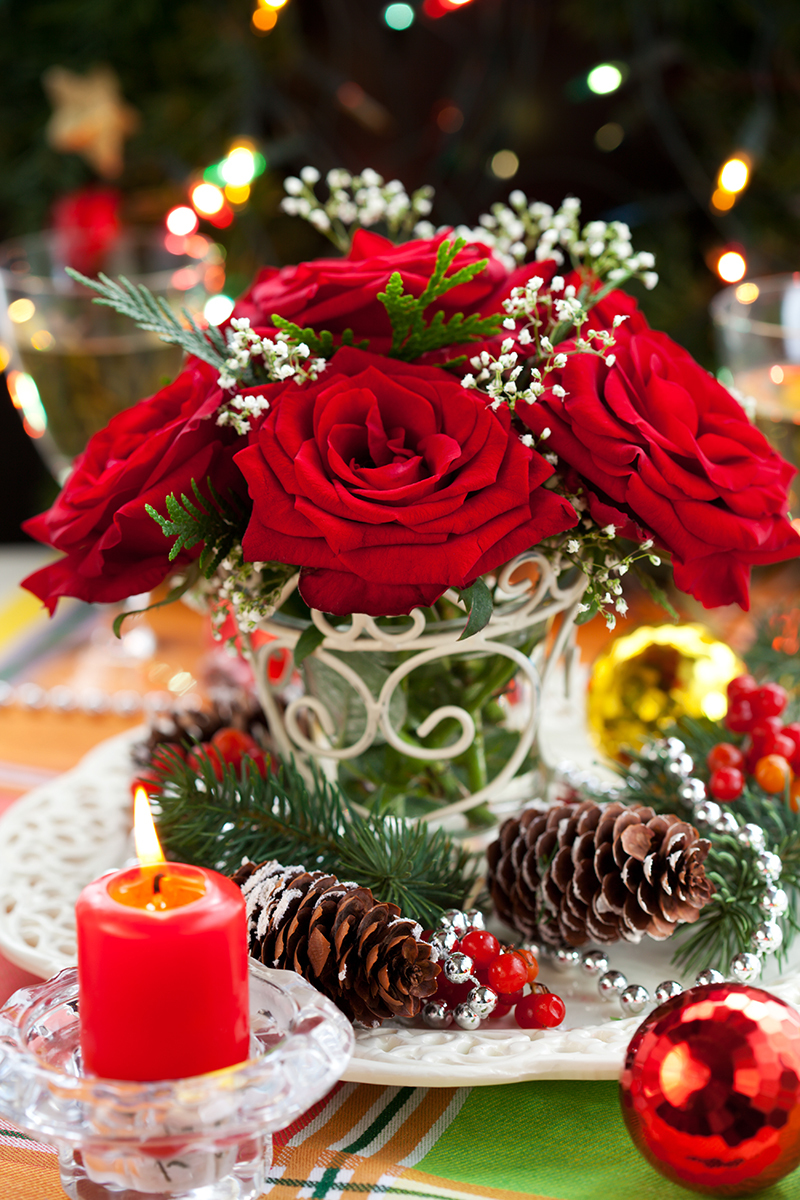Ensuring Your Poinsettias Thrive Well After Purchase
Posted on 29/08/2025
Ensuring Your Poinsettias Thrive Well After Purchase
Poinsettias have become synonymous with the festive season, brightening homes and businesses with their vivid bracts and lush green foliage. While these beautiful plants are most often purchased for holiday displays, with proper care, you can enjoy their vibrancy for months--even well after the holidays have passed.
In this comprehensive guide, we'll cover everything you need to know about ensuring your poinsettias thrive well after purchase. From choosing a healthy plant to year-round care, common problems, and long-term maintenance, you'll get all the tips needed for healthy, happy poinsettias.
Choosing the Right Poinsettia for Long-Term Success
Before diving into care tips, it's essential to start with a healthy plant. Ensuring your poinsettia thrives begins at the point of purchase.
What to Look for When Shopping
- Vibrant Bracts: Bracts (the colored leaves) should be fully colored and unblemished.
- Green Leaves: The leaves below the bracts should be deep green and perky, not yellow, wilted, or dropping.
- Healthy Stems: Stems should be stout, not weak or spindly.
- Soil Moisture: The soil should be moist, not soggy nor dried out.
- Intact Flowers: The actual flowers (the tiny yellow buds in the center of the bracts) should still be just beginning to open.
Tips for Bringing Poinsettias Home Safely
- Protect from Temperature Extremes: Poinsettias are sensitive to both cold and wind. Ensure they're wrapped securely for the journey home, especially in winter.
- Avoid Chilling Damage: Never leave poinsettias in a cold car or expose them to freezing temperatures. Even brief exposures to cold can damage the plant.

Unpacking and Placing Your Poinsettias
After purchase, the way you unpack and position your poinsettia can significantly impact its health.
How to Unpack Properly
- Gently Unwrap: Remove any cellophane, sleeves, or decorative wrap as soon as possible to allow air circulation.
- Check for Damage: Inspect for broken stems or dropped leaves, which might indicate temperature stress during transport.
Where to Place Your Poinsettia
- Bright, Indirect Light: Place your poinsettia in a spot with plenty of natural, indirect sunlight. At least 6 hours a day is best.
- Stable Temperatures: Aim for a temperature between 65?F and 75?F (18?C and 24?C) during the day, slightly cooler at night.
- Away from Drafts: Keep poinsettias away from doors, heating vents, fireplaces, and drafty windows to avoid sudden temperature changes.
- Keep Off the Floor: Raising your plant off cold floors, especially tile or concrete, helps avoid chilling the roots.
Ongoing Poinsettia Care: Watering, Feeding, and Beyond
Watering Your Poinsettias
- Check Regularly: Water when the top inch of soil feels dry to the touch. Overwatering is a common killer of poinsettias.
- How to Water: Water thoroughly until it drains from the bottom. Always remove any excess water from saucers to prevent root rot.
- Avoid Waterlogged Soil: If your poinsettia came in a decorative foil or wrapper, remove it or punch holes to allow water to escape.
Tip: Underwatered poinsettias develop wilted or curled leaves, whereas overwatered plants tend to drop leaves and show yellowing.
Feeding and Fertilizing
- No Fertilizer Needed During Bloom: Poinsettias you buy in bloom do not need fertilizer while flowering (usually until late winter).
- Fertilize for Extended Growth: If you're keeping the plant into spring and summer, feed with a balanced, all-purpose houseplant fertilizer every 3-4 weeks.
Humidity and Air Quality
- Maintain Moderate Humidity: Poinsettias thrive in 40-60% humidity. Dry air (often due to central heating) can cause leaf drop.
- Use a Humidity Tray: Place the pot on a tray with pebbles and water below the surface to boost humidity around the plant.
Common Problems and Solutions
Knowing how to address common poinsettia issues can help you prolong their life and vibrancy after purchase.
Leaf Drop
- Causes: Sudden changes in temperature, drafts, overwatering, or underwatering.
- Solution: Stabilize the environment. Ensure even temperatures, regular watering, and avoid drafts.
Yellowing Leaves
- Causes: Overwatering or underwatering. Sometimes due to low humidity.
- Solution: Feel the soil and adjust your watering routine. Increase humidity as needed.
Dull or Faded Bracts
- Causes: Insufficient light or plant aging.
- Solution: Move plant to a brighter location. Once bracts fade, the plant can still thrive and grow green leaves through spring and summer.
Pests
- Common Bugs: Whiteflies, spider mites, aphids, and mealybugs.
- Solution: Rinse the plant with a gentle spray, monitor closely, and treat with insecticidal soap if needed.
Advanced Care: Keeping Poinsettias Year-Round
If you want to extend your poinsettia's lifespan past the holidays, follow these steps to encourage healthy growth and maybe even re-flowering for the next season.
Spring Care
- Once Bracts Fall: In early spring, the colored bracts and some leaves will naturally drop.
- Pruning: Cut stems back to about 6 inches from the soil. This reduces legginess and encourages new growth.
- Resume Fertilizing: Begin monthly feeding with a balanced fertilizer.
Repotting
- Choose the Right Pot: As new growth begins in late spring, repot if roots are tightly packed. Choose a pot only 1-2 inches larger in diameter.
- Use Fresh Soil: Use a well-drained, sterile potting mix for best results.
Summer Growth
- Move Outdoors: Once temperatures remain above 60?F (16?C), you can move your poinsettia outside to a shaded, protected area.
- Pinching Back: For a bushier plant, pinch back stems (removing 1-2 inches of new growth) every 3-4 weeks until the end of August.
- Regular Watering: Outdoor plants may dry out quickly; water as needed, never letting the soil become waterlogged.
Preparing for Rebloom
- Darkness Treatments: Starting in early October, your poinsettia needs 14-16 hours of complete darkness every night for about 8-10 weeks to trigger flowering. Place in a closet, cover with a box, or use blackout curtains from 5 PM to 8 AM.
- Daylight: Provide bright light during the daytime, moving the plant back and forth if needed.
- Steady Temperatures: Be consistent--missed days can delay or interrupt blooming.
Frequently Asked Questions About Poinsettia Care
Are Poinsettias Poisonous?
- Not Highly Toxic: While long considered hazardous, research shows poinsettias are not dangerously poisonous. However, ingesting leaves may cause mild stomach upset in people or pets, and the sap can be irritating to some.
- Precaution: Keep out of reach of curious pets and children.
How Long Do Poinsettias Last After Purchase?
- Well-Cared Plants: With proper care, your poinsettia can remain attractive for 2-3 months after purchase, with some lasting well into spring or longer.
- Year-Round: By caring for your plant beyond the holiday season, you can enjoy it as a permanent houseplant, or even encourage reblooming for next year!

Decorating with Poinsettias Beyond the Holidays
Poinsettias aren't just for Christmas! Their bold foliage complements a variety of interior styles and color schemes year-round. Consider these ideas:
- Transitional Centerpieces: Place in decorative planters for winter-to-spring transitions.
- Accent Plant: Use in sunny spots paired with green-leafed houseplants for contrast.
- Outdoor Container Displays: In frost-free climates, incorporate poinsettias into mixed planters for patio color.
Summary: Your Roadmap for Healthy, Thriving Poinsettias
- Buy a healthy plant with good color and sturdy stems.
- Transport carefully to avoid exposure to cold or wind.
- Choose the right location--bright light, away from drafts and temperature swings.
- Water regularly without letting the roots sit in water.
- Feed and prune for long-term vitality and reblooming.
- Monitor for pests and act quickly if needed.
- Enjoy your poinsettias year-round as versatile, colorful houseplants!
Ensuring your poinsettias thrive after purchase is not only possible, it's rewarding. These festive favorites offer beauty and brightness, whether you enjoy them for the season or as a long-term addition to your indoor and outdoor garden spaces. With a few simple steps, you'll master how to care for poinsettias well after you bring them home--creating a tradition of vibrant color and healthy plants for years to come.
Ready to let your poinsettias thrive? Share your own tips and experiences below!
Latest Posts
Comprehensive hydrangea care for blossoming success
Ensuring Your Poinsettias Thrive Well After Purchase
Effortless Elegance: Plants Perfect for Your Office






